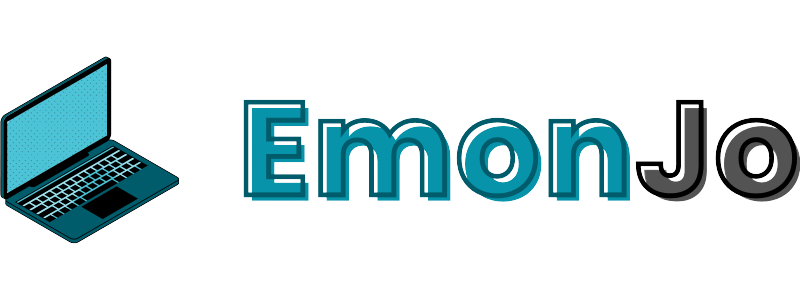Note: This article describes a number of body motions and actions we perform consciously and subconsciously. Do them as you read to get a better understanding of the content.
Question: Do you crack your knuckles when you’re angry? Or, have you ever seen that anime glasses-push thing they do when a character’s about to say something super smart? What about the snort you hear when you’re playing someone in a fighting game, following a lot of shit talk, and they win the match. Have you heard that one? You’ll probably suck your teeth or roll your eyes after. Maybe take a deep breath and lift your heels off the floor.
We all have these little motions and sounds we do and make when we’re expressing ourselves or concentrating. Some intentional, like a yawn accompanied with a stretch to get our head straight and body loose. Others, less obvious to our senses, like tilting our head in a certain direction when we need to think.
Hmph.
The body is an amazing specimen. When we do these different actions, whether it be intentional, habitual, or reactionary, we download them into our behavioral archive. Essentially entailing the future performance of these actions should our circumstances reflect whatever situation originally caused them.
Take nervous honesty, for example. A lot of times, when someone’s being questioned on information they are somewhat willing to share, but not entirely sure if they want you to hear it, you’ll see them scratch their leg.
This is a pacifying behavior done to soothe the person. They do this, most likely subconsciously, to alleviate the stress accompanied by feeling vulnerable.
They may scratch when being asked a simple question of, “Was it you who ate my food the other night?” Or, a more serious question, let’s say, while being interviewed, like, “Have you ever had any complications with your supervisors at your previous jobs?” In both of these situations, if our person feels nervous, and they tend to scratch their leg, as most people do when they feel nervous, then we will likely see them scratch their leg.
We all have different pacifying behaviors we do when things get uncomfortable. Now, if we are able to track these behaviors consciously, we can begin to link the thought patterns and external stimuli associated with these thought patterns, with the actions that normally follow.
From there, we can develop counterbalancing actions, or as I like to call them, refocus tics, that will aid us in getting back to living comfortably within our own skin.
In this article, I discuss these refocus tics, which are behaviors we do that remove distracting, painful, or annoying stimuli from our registration of current events. Essentially, they are things we do to try to stay comfortable and in control.
Microexpressions
To understand how to intentionally perform refocus tics, which again, are counterbalancing behaviors, expressions, and thoughts to disrupting stimuli, we must first understand our inherent ones. Everyone is different, we must remember this; however, this is not entirely true.
There are 7 microexpressions globally ubiquitous in human nature. These microexpressions, researched and identified by Paul Ekman, an American Psychologist, are happiness, disgust, fear, anger, sadness, surprise, and contempt.
The importance of knowing this is that although humans are different, and we have things like culture, race, and personal experiences that go into play in how we react to different circumstances, there are still detectable reactions that inevitably occur, given certain conditions.
Meaning, that when we are truly happy, say, when someone gives us a nice gift, we’re likely to display this happiness, via our facial expressions, in a manner that reflects the globally identified representation of happiness; i.e., crow’s feet around the eyes.
Fight, Flight, and Freeze Reactions
Along with microexpressions that can reveal seven inherent feelings, we have three natural stress reactions that occur when we sense danger. These are known as our fight-flight-freeze responses and they’re a part of our limbic system.
According to an article on Healthline, the fight-flight-freeze response is our body’s natural way of dealing with perceived threats. Innately, we do it to protect ourselves. When it’s triggered, several physiological reactions occur within us.
Reactions such as increased heart rate, intensified oxygen flow, dilation of the pupils, and more sweat production. These reactions enable our body, in the grand scheme of danger, talking about running for your life status, to handle threats better by amplifying our senses.
There are two things important to note about the fight-flight-freeze response. First, it’s automatic. Meaning, we can not control the physiological reactions that occur within us if our bodies and minds truly do perceive something as a threat. And second, anxiety and trauma can cause us to be oversensitive to threats resembling our initial stressors.
Meaning that instead of experiencing dilated pupils and sweaty skin while being chased by a lion, we can instead feel this stress in many of our everyday activities, like taking a test or being interviewed. Another important note is that these three states can work in conjunction with microexpressions, and reveal a plethora of reactions likely to occur, that align with whether we want to combat something, run away from something, or don’t know what to do at all due to something.
The Breakdown
| Happines | Saness | Fear | Anger | Disgust | Contempt | Surprise | |
| Fight | X | ||||||
| Flight | |||||||
| Freeze |
Say an uncomfortable external stimulus triggers our inherent microexpression, Anger. At this moment, we are uncontrollably suggested by our brains to present some physical response outward of ourselves, most likely towards that external stimulus, reflecting that of an “angry” response, i.e., bringing down the brow and firmly pressing the lips.
From there, our behavioral archive - our compilation of previous actions, refocus tics we’ve engineered to become more comfortable, and the power of choice allowing us to attempt a new desired level of comfort - is triggered; and, we do something.
We fight, flee, or freeze given that external stimulus’ presence causing that microexpression, in an attempt to establish or reestablish our being.
Perhaps we engage in closer proxemics towards the thing that enraged us, as you’ll often see when you have to guard someone in sports and your man just scored.
Or perhaps, a flight reaction may be more comfortable for us, and when anger presents itself, say when seeing someone we don’t quite like walking down the street, we turn the other way hoping to avoid an uncomfortable conversation.
Even in ignoring certain things, a choice is then made to intentionally give attention, and often emotions, to one thing, while not giving it to something else. Perhaps something you’ve deemed simply a distraction.
Knowing this, it is reasonable to assume that if we were trying to improve in anything, there are certain behaviors and expressions we do and make, indicating our level of comfort and engagement with that activity. Knowing this, it can be assumed that these levels of comfort, which are displayed via our body, can be manipulated by our bodies, by performing or not performing certain actions consciously rather than automatically.
What Does All of this Mean?
Another way to look at it is like this: If in the presence of uncomfortable stimuli, we inherently do something to feel comfortable, can we instead choose the next action, following the initial presence of the uncomfortable stimuli?
Essentially if we know what makes us uncomfortable and we know how our body automatically reacts on multiple levels, i.e., our facial expressions and physiological responses, to these uncomfortable stimuli, can we then engage in certain behaviors that will automatically counterbalance the inhibiting force of these uncomfortable stimuli?
Can we compel ourselves to feel comfortable?
More on Nervous Honesty
For example, if I were aware that when I get nervous, I tend to scratch my leg; and, I don’t want other people, or hell, myself mainly, knowing or thinking that I am are nervous - as, scratching is often related to nervousness regardless of race or culture - I would then have to engineer new behaviors I’d like to do, should I feel the nervousness within me intensify.
A behavior that will allow me to feel something else. With hope, I will do something that causes the opposite of nervousness.
Something that empowers me.
Like gathering my breath, pumping out my chest, and securely feeling the weight of my feet on the floor.
In essence, if I can track the initial feeling of “Oh shit,” from the moment the instability is felt to the moment my hand begins to move towards my leg, I will then have time to choose how I alleviate myself from that established pressure.
That is, scratch that itch.
Control the Itch
It is usually some form of scratch, jerk, stretch, or muscle flex that we will perform in order to stay comfortable. In other instances, once discomfort appears, we may reach for our phones or take a sip of a nearby drink. We may look towards a comforting friend or just keep smiling and say nothing at all.
We all have certain behavior chains to different external stimuli.
And again, because these reactions get stored into our behavioral archive, thus perpetuating the likelihood they’ll reoccur, we must properly manage our avoidant behaviors and understand what we do when we embrace challenges, should we want to consciously improve in things and avoid redundant mediocrity.
This way, we choose our actions. This way, we transcend from simply performing the inevitable reactions humans are prone to make.
This way, we live ready to execute. Not fluke.
Here’s how to engineer new and powerful refocus tics that will help improve your life.
1) Choose a Desired Performance Level
To first be good at something, we must either be naturally good at it or possess a strong enough inclination to do well where our growth is easily facilitated. Confidence is key in improving. Believing you have the capability to perform at a certain level, requires first that you identify what this level is and accept the responsibility accompanied with it.
For example, when learning to play basketball, even with just doing lay-up drills, you have to know you’re going to jump consecutively, and consequently, will become tired.
However, if in your head and body, you agree to execute all the way throughout, dribble after dribble until it’s finally time to jump, extend your arm, and place the ball in the hoop, you set the tone for proper execution.
Simply, you have to want it; then do it.
2) Observe, Try, Research, Repeat
Now, of course, simply wanting something doesn’t mean you’ll necessarily get it. Oftentimes, because we’ve performed certain behavior chains for such a long time, attempting a new course of positive actions is both incredibly daunting and tiring.
Nevertheless, there are certain postures, breathing exercises, and mindsets you can employ that will set you on the right path toward prolonged comfort, even in the face of an aversive stimulus.
Standing or sitting upright, for example, is known to induce positive feelings of self-control and clarity. What’s more, slouching is known to do the opposite. There’s good reasoning behind this too, because, when we slouch and perpetually hold ourselves in bad posture, we compromise our physical and mental well-being. Like how having lower back pain can make you grumpy.
So, by adjusting your body into powerful postures, you not only position yourself to maintain a healthy body for a longer period of time, but you also increase the likelihood of positive thoughts.
Try holding yourself upright with your chest out and your shoulders back. How do you feel?
It might take some walking around and live scenarios to gauge whether you feel more confident or not, but tracking your thoughts based on your posture is a helpful way to manage your comfort.
Learning when you lean, or falter a bit in your step or natural expansiveness, will grant you insight into what external and internal stimuli cause you certain reactions.
Keeping a mental dialogue in different settings will help you more easily observe yourself.
“I can feel my breath on my lips right now.”
“My stomach dropped when they looked at me.”
“I’m not holding my head up high right now. Let’s see how long I can without feeling like something’s telling me I should duck my chin. I wonder if I can beat that thought. I wonder if I can replace it.”
See what thoughts you have while talking with someone or working on a strenuous task.
Relax your face, shoulders, and core muscles and observe how they tighten and loosen given the interaction you are having or the action you’re performing.
3) Compare
Once you have an understanding of how you react to certain stimuli, compare your reactions from one stimulus to another similar one. This way, you gain further insight into the situations that cause uneasiness within you.
For example, if once, you noticed when you spoke to a person you found very attractive, you were quick to end the conversation or became tongue-tied; and in another instance, you did the same thing, you would then have a reasonable understanding of what you do in those types of situations.
Knowing this, you would be able to make fairly conclusive inferences on how you might act in a future conversation with another attractive person, should your mindset and intent remain the same.
Now, the question is: Are you okay with this?
4) Get Angry with Complacency
If the last statement holds true, in that, you know you’re prone to shrinking yourself, therefore likely to do it again; at this point, intentionally, because you believe it to be your true nature, know that you would then have accepted that your personal happiness is forever limited by the idea of: “I can’t struggle for something new that I want.”
If that is true, if that is what you truly believe…then cut that shit out right now.
You deserve to be happy. You’re essentially required by the law of self-appreciation, to live a life consciously, not simply swayed by the world around you in a perpetual yielding-like fashion.
The fuck? Why?
Don’t you want to win, yo? Aren’t you tired of not getting what you want and pretending like “Nah, I didn’t really want it all that much”?
If so, know that creating a new space in your head for a new you – one vigilantly avoidant of weak behavior, someone dedicated to incremental improvements – will serve as a beautiful first step in rising above your old identity.
To become a new and improved version of yourself, you must first beat your inherent behaviors that circulate redundant performances.
You are powerful.
5) Remain Consistent and Continuously Grow
Once you’ve decided you deserve comfort and have chosen preferred performance levels in your many activities, you must keep them. Just because you can finally dribble now doesn’t mean it can’t get reset, yo.
As the old saying goes, you never forget how to ride a bike.
Sure.
That doesn’t mean your body won’t “forget” how to move the way you’d like it to. Without reinforcing the motions, a feat like balancing, peddling, and turning, simultaneously, can be a difficult trifecta to pull off.
Point is, you have to continue to learn and grow. Continue to choose desired performance levels; continue to observe how you react to certain stimuli; compare those reactions with similar situations; get angry when you’re performing at a subpar level and are okay with it; and, continue to continue.
Straight up, you have to. And when you agree to do so, you foster the best refocus tics in your body that enable you to push past the natural human reactions designed only to protect, and unfortunately baby you.
Remember, distractions, a lack of dedication, and weaknesses appear in a trackable, observable manner in people.
But if we act in opposition to these distractions, of these weaknesses, in both our mind and body, we enable ourselves to obtain the things we truly want.
You. Are. Powerful.
Focus, bruh.
Now, in performing these steps to improve your natural reactions to internal and external stimuli, remember that automatic refocus tics will already be happening or ready to happen.
That’s okay.
Actually, it’s a great thing.
If in attempting to make yourself better, you now consciously feel the behaviors and thoughts that you do that make you feel not so good, you at the very least have a tangible list of actions you know you want to change.
Now, all that must be done is to pick the proper refocus tics to counterbalance these automatic behaviors.
And then you’re well on your way to being the best version of yourself.
Below is a list of conscious and unconscious actions/ refocus tics I personally do and my interpretation of what they mean. In addition, there are several actions I believe people normally do, and what a number of psychologists, behavior analysts, criminal investigators, and poker players believe they mean.
For any of these, if the behavior is done, it is not necessarily 100% indicative of what is going on in someone’s head.
Additionally, while research does suggest that microexpressions do hold weight in determining liars and thought patterns, they are not an end-all-be-all solution to understanding the inner workings of someone’s mind.
Nevertheless, I believe them to be very damn close.
**The list is continuously expanding. Check for updates**
| Behavior | What I Think | What Others Think | When This Usually Happens | Should You Do This Intentionally? |
| Rub my nose with my thumb quickly, as if I’m pressing it | Indication of confidence | Relief of tension and a negative thought or feeling just occurred and the nose touch is done to soothe the body or block the negative thought from manifesting | 1. Once I know I’ve gotten someone in an argument. 2. When I make a nice shot in basketball 3. Beating Someone in a video game 4. When I get a good hand in a card/ board game | I personally don’t think rubbing your nose intentionally provides the same confidence boost that comes when you do something intentionally and your body automatically does it. So no. |
| Back of the head scratch | Confusion | Confusion | 1. When I’ve begun stumbling on thoughts or words. 2. When I haven’t had an answer for something for more than 10 seconds | As a presumed indication of confusion, intentionally implying to feel this way does not seem progressive. No. |
| Leg cross after being questioned | Guard up | Defensive attitude | 1. When being questioned about something personal 2. When getting comfortable with people and jokes are about to fly | |
| Finger press to the top of jaw next to the ear | Restraint during inquisition | Refer to Malcolm X’s interview | 1. When I want to listen to what someone has to say and make sure I both don’t interrupt and that I understand | |
| Few Blinks | Moving on | Waiting for feedback, or providing subtle, non-intrusive feedback | 1. When I’ve heard something interesting or relevant to me somehow, that I know someone has revealed to me but have not directly told them they just gave me insight | |
| Yawning | Avoiding the point/ Getting back to the point | Indication of comfort, especially if mirrored | 1. Moving a conversation forward 2. Preparing to end a conversation or interaction | |
| Deep breath | Sudden realization | Feeling pressure (Look for “Sharp intake of breath”) | ||
| Lip twitch w/ Eyebrow flicking down | Repressing anger | Eyebrows being pulled down is usually an indication of anger. Most sites say that lips may be “tighten” so, the twitch may be the quick tightening and loosing of this expression. | ||
| Leg Scratch | Nervous Honesty | |||
| Rubbing hands together | Feeling good/ positive about a future event. Money or food coming | |||
| Pressing tongue firmly to the roof of the mouth | Listening and thinking hard, ready to respond. Anticipating intensely | |||
| Flicking eyelids downwards | Settling realization | |||
| Wide eye zone out to “huh” | Fear |





